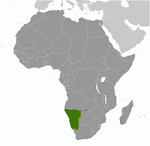This past Tuesday, November 16, was the beginning of the three-day Muslim holiday Tabaski, also known as Eid ul-Adha. . It is a holiday celebrated to recognize Abraham’s (Ibrahim’s) submission to the command of Allah in sacrificing his only son, Ishmael. The Koran describes Abraham in the following passage:
"Surely Abraham was an example, obedient to Allah, by nature upright, and he was not of the polytheists. He was grateful for Our bounties. We chose him and guided him unto a right path. We gave him good in this world, and in the next he will most surely be among the righteous." (Koran 16:120-121)
Before Abraham was able to sacrifice Ishmael, Allah intervened and communicated that his devotion was evident through his willingness to obey the word of Allah, thus his sacrifice fulfilled. Allah gave Abraham a ram to sacrifice instead.
On the first morning of Tabaski, the Muslim people attend morning prayers at their mosque. I was invited to morning prayers by my landlord. Naturally, I accepted. He told me to wear a long skirt, or pagne, which is a piece of material 2 meters long that you wrap around your body, and a long sleeved tunic. I scrounged around through my clothes and managed to find something. I was told to meet my landlord’s sister in the morning, who lives in my concession. I went to the house of his sister Tuesday morning and told her I had nothing to cover my head. She quickly remedied the situation by covering me with a beautiful white head scarf. She nodded with approval, while the little girls giggled. We then walked about 2 miles to Mosque. The Mosque we attended for morning prayers was outside and consisted of rows divided by narrow piles of dirt, covered with mats that individuals brought themselves. We arrived early and sat with a group of elderly women who excitedly waved me over and gestured for me to sit directly in the middle, sharing with me the mats they had brought. I sat down and they started chattering away and we learned a little about each other, then one woman handed me a circular strand of beads, known as prayer beads. There are 100 beads per strand and as you pray, you move the beads along one at a time with your thumb and forefinger of your right hand. I found this strangely calming. As more people arrived, I felt something like a fly on the wall, for people did not immediately recognize me or my white skin, because my body was almost entirely covered. As soon as kids did recognize me, word traveled very quickly and most of them were no longer facing East, but instead facing me. But, I just kept moving my prayer beads between my fingers and wasn’t distracted at all. (The woman pictured lives near the outdoor mosque and requested a picture be taken).

A woman who frequents the health center saw me and hurriedly came over and squeezed between myself and the elderly woman to my left. She served as my Muslim prayer guru, elbowing me if I didn’t bow on time, put my head flat enough on the ground, or pay close enough attention, and swatting at my hands if they were incorrectly placed.
After morning prayers, goats began to be sacrificed. One of the walls of my house serves as wall of a goat pen and for the last 4 weeks, 3 fairly large goats have been kept there and have have successfully woken me up at all hours with the ruckus they frequently made. Tuesday night, I slept soundly. Those 3 goats seem to have been the prize goats. I saw goats darting throughout the village all day, never casually strolling as they often do. I offered them best wishes and promised not to tell anyone about their whereabouts. (The last photo is of another Mosque within my village).
 Music was playing, drums being beaten and the sound of people talking and laughing together was mixed in with the smoke.
Music was playing, drums being beaten and the sound of people talking and laughing together was mixed in with the smoke.









